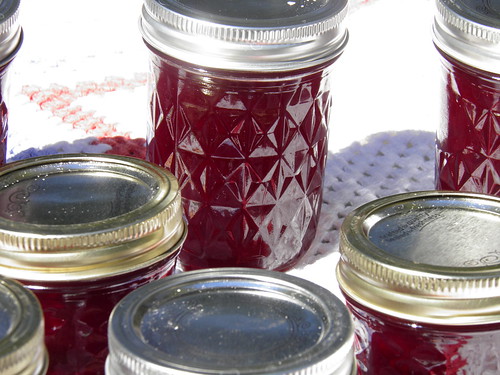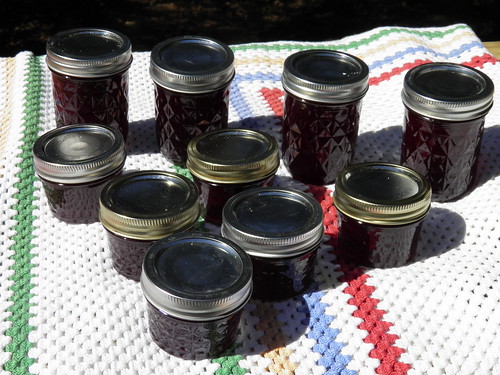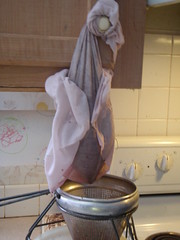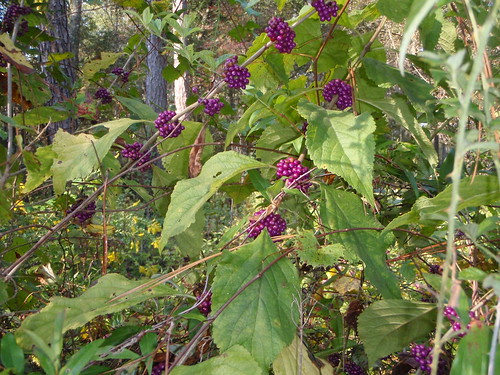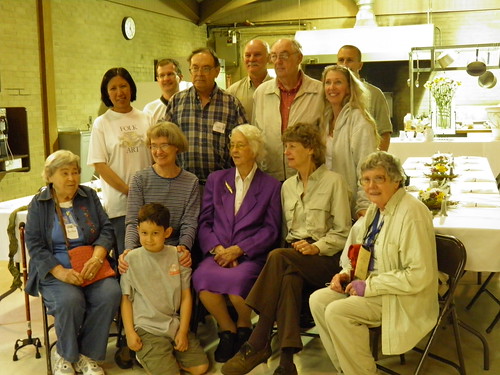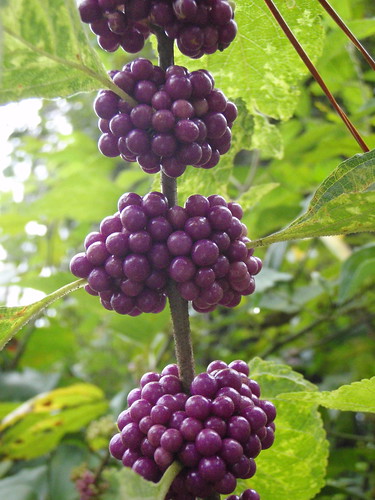Beautyberry, Callicarpa americana, proven insect repellant!
Barbara Pleasant wrote for Mother Earth News April/May 2009, Beautyberry Banishes Bad Biting Bugs: Researches are finding evidence that beautyberry, long used as a folk remedy, really does deter bugs such as ants, ticks and others.
In 2006, researchers at the U.S. Department of Agriculture’s Natural
Products Utilization Research Unit in Oxford, Miss., found that extracts from beautyberry leaves could match DEET for repelling mosquitoes. The next year, experiments showed that the active ingredients from the leaves (callicarpenal and intermedeol) provided 100-percent repellency of black-legged ticks for three hours. In 2008, the four-person research team, headed by chemist Charles Cantrell in Mississippi and entomologist Jerome Klun in Maryland, published research that added fire ants to the list of pests repelled by essential oil distilled from beautyberry leaves….
Fresh green leaves, crushed and rubbed on people or pets, often repel insects for a couple of hours.
Looks like Charles L. Cantrell of U. Miss. has published several papers about this:
Continue reading


